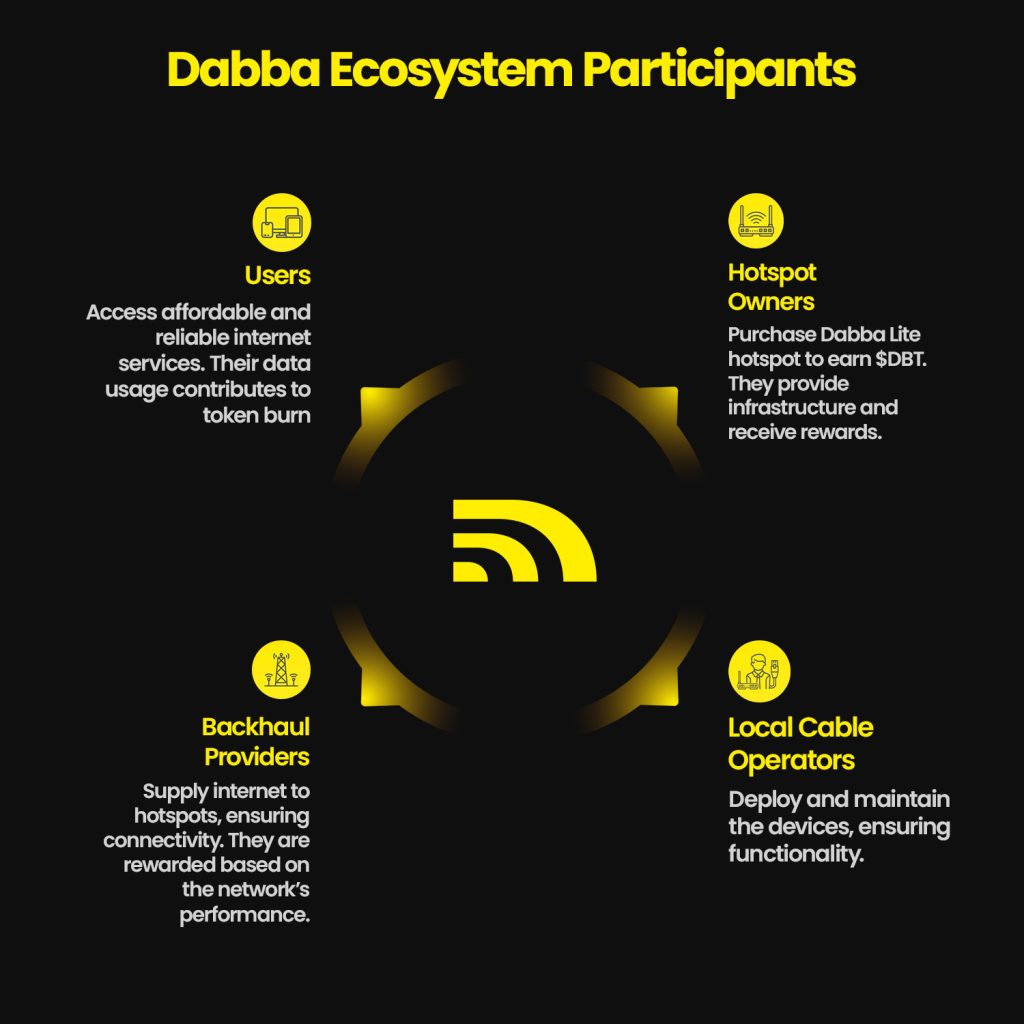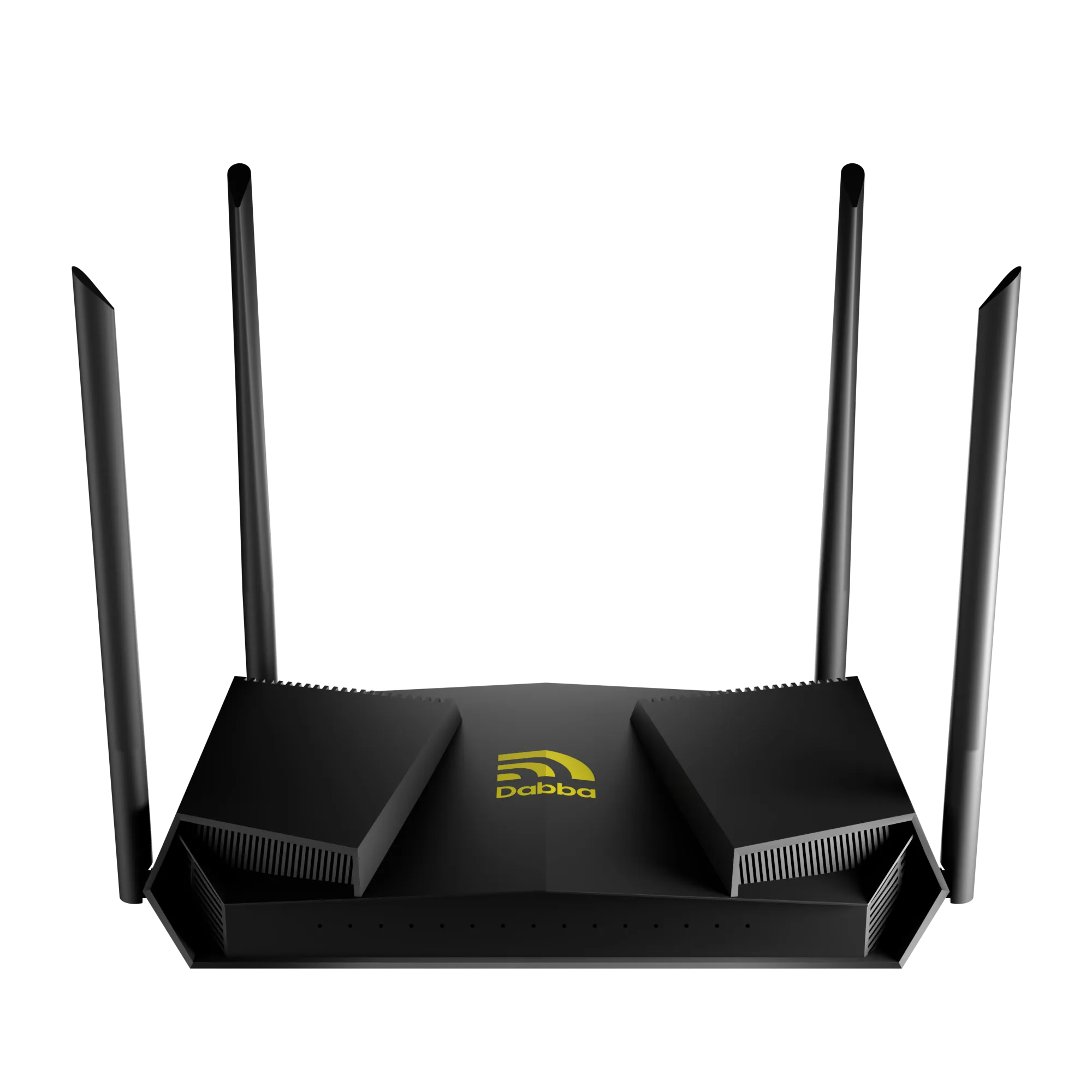The internet fuels nearly every modern business, yet the telecom industry that powers it has remained largely centralized and unchanged for decades. Dabba is taking an innovative and different approach: tokenizing bandwidth — turning internet connectivity itself into an on-chain asset.
But what does that actually mean? Let’s break it down.
What Does Tokenizing Bandwidth Mean in Dabba’s Context?
At its core, bandwidth is data flowing across networks, and it has real-world value.
In Dabba’s model, every gigabyte of data consumed by users drives demand for the network’s native utility token: $DBT.
Here’s how:
- Users pay for data in local fiat currency.
- These payments convert into Data Credits (DCs) pegged to fiat value.
- For every DC purchased, an $0.012 worth of $DBT is automatically burned — permanently reducing token supply.
In this way, bandwidth consumption is directly linked to token demand and scarcity.
Every megabyte burned translates into real on-chain economic activity.
How Dabba Is Building the Telecom Business On-Chain & Incentivizing Stakeholders
Dabba is building a decentralized network of hotspot owners and Local Cable Operators (LCOs) who power the ecosystem. Here are the key stakeholders:
- Hotspot Owners: Buy and own Dabba Lite devices; earn $DBT as their devices deliver data.
- Local Cable Operators (LCOs): Deploy and maintain devices; share in revenue and token incentives.
- Backhaul & Infra Providers: Bring the internet to the hotspots; get rewarded based on performance.
- Users: Get cheaper, reliable internet; their consumption drives token burns.
As Dabba moves ownership, deployment, and incentives on-chain, it creates a shared, trustless system where rewards flow transparently to contributors — not just big telecom shareholders.

Why This Is Better Than Conventional Telecom Models
In traditional telecom:
- Massive upfront investments create high entry barriers.
- Decisions are centralized; underserved regions stay disconnected.
- Limited transparency; revenues flow mainly to the top.
By contrast, Dabba’s on-chain model:
- Distributes costs across thousands of global hotspot owners.
- Uses data-driven tokenomics (mint-buyback-burn) to align incentives.
- Empowers local micro-entrepreneurs (LCOs) to expand connectivity into rural and semi-urban India.
- Ensures that network growth automatically benefits contributors, thanks to token burns and demand.
It’s a model built to scale inclusively — not just profitably.
How the Model Works: Mint-Buyback & Burn
Here’s the token flow simplified:
- Network mints $DBT tokens to reward hotspot owners, LCOs, and contributors.
- Users pay for data in fiat → purchase DCs.
- Protocol automatically buys $DBT and burns it.
- As the network scales, more data consumption → more $DBT burned → rising scarcity.
Even before mainnet, testnet numbers show real traction:
- 13,000+ hotspots sold across 60+ countries.
- 5,800+ active hotspots deployed by LCOs.
- 141,000+ daily connected devices.
- 12,600+ terabytes of data consumed — even before full rollout.
These numbers aren’t theoretical; they reflect real user demand.
Suggested Reading: How $DBT Powers the Dabba Ecosystem? Understanding Dabba’s Mint-Buyback-and-Burn Model
The Future: How Big Can This Get?
India is the world’s second-largest internet market but still has only ~40 million fixed broadband subscribers vs. China’s 650 million.
Data demand keeps exploding: the average Indian already consumes 32.5 GB of mobile data per month — the highest globally.
Dabba’s goal:
- Deploy 100,000+ hotspots in 18 months
- Partner with 100+ LCOs
- Support 2 million+ daily connected devices
- Burn millions of dollars’ worth of $DBT, linking on-chain value directly to off-chain bandwidth usage.
Scaling Beyond India: A Blueprint for Emerging Markets
While Dabba’s current focus is on India — the world’s largest untapped fixed broadband market — the potential of its decentralized, demand-driven connectivity model isn’t limited by geography.
Across Asia, Africa, and Latin America, the last-mile connectivity challenge is strikingly similar:
- National telcos focus investment in dense urban centers to maximize ARPU.
- Rural and semi-urban regions remain underserved or completely unconnected.
- Infrastructure rollout is slow, centralized, and often stalled by high capital expenditure, regulatory hurdles, and low short-term ROI.
In these markets, traditional telecom models have failed to keep pace with surging data demand:
- For example, Sub-Saharan Africa has internet penetration of just around 29% according to GSMA.
- In Southeast Asia, fixed broadband penetration in countries like Indonesia, the Philippines, and Vietnam remains below 20–30%.
- Even where mobile data is available, it’s often expensive, unreliable, and insufficient for high-bandwidth applications like education, remote work, and streaming.
Why Dabba’s Model Can Scale:
- Local partnerships first: Instead of competing with local ISPs or small operators, Dabba’s model empowers them through capital, technology, and a shared economic layer.
- Demand-driven deployment: Hotspots are installed only where there’s proven data demand — reducing idle infrastructure and risk.
- On-chain incentives: With real-world bandwidth consumption driving token burns, the model creates a sustainable cycle of investment, growth, and value.
- Hardware-agnostic framework: The approach can adapt to different regions’ needs — from Wi-Fi hotspots in dense urban slums to fixed wireless solutions in rural areas.
The Opportunity:
According to the World Bank, nearly 3 billion people worldwide remain offline, and the digital divide costs emerging economies billions in lost GDP each year.
Tokenizing bandwidth and decentralizing deployment could unlock:
- New revenue streams for local entrepreneurs.
- Affordable, reliable internet for millions of households.
- A truly global digital infrastructure built from the bottom up, not imposed top-down by a handful of telcos.
Suggested Reading: How India’s Streaming Habits Are Building the Case for Dabba’s Decentralized Broadband Infrastructure
Final takeaway
By tokenizing bandwidth, at Dabba we aren’t just democratizing internet accessibility.
We are:
→ Creating real-world utility on-chain.
→ Bridging global crypto capital with local deployment.
→ Turning data consumption into deflationary tokenomics.
→ Bringing billions on-chain through everyday bandwidth demand.
It’s the next step for DePIN (Decentralized Physical Infrastructure Networks) and could transform how we build and fund connectivity — from India to the world.
